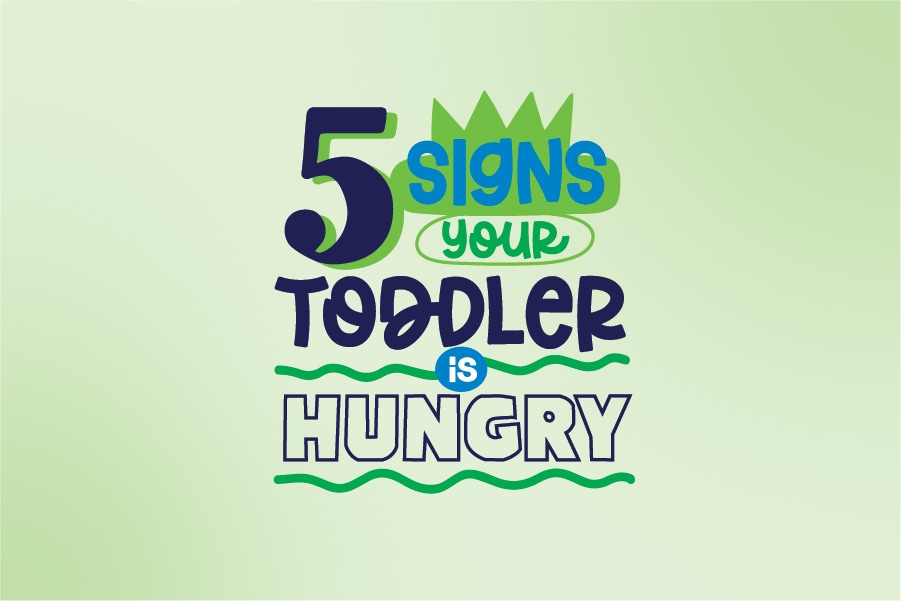Your Role and Your Child’s Role During Mealtimes
As a caregiver, kids’ nutrition is something that may be on your mind all the time. You may wonder: Is my child building a healthy relationship with food? Is my child not eating enough or eating too much? How do I get my child to eat? Is my child a picky eater?
If you want to raise a healthy eater—and minimize mealtime stress— start by knowing the roles you and your child play during mealtimes. This concept, called division of responsibility, can help you build healthy family eating habits and make mealtimes more enjoyable for everyone.
In this article:

What is division of responsibility during mealtimes?
Division of responsibility is knowing the roles you and your child play during mealtimes. You each have a job to do and you have to trust one another (and not apply any pressure). When everyone does their job, there’s more structure and, best of all, less stress.
As the caregiver, you decide:
- What food will be offered.
- When food will be offered.
- Where food will be offered.
Your child decides:
- If they want to eat.
- What foods they’ll eat (from the foods you provide).
- How much they’ll eat.
Building a healthy relationship with food is just like learning any other skill—your child is going to do it at their own pace and in their own way. But they need a little guidance, support and trust from you.
The caregiver's role: Decide what food you'll offer
For babies, the only foods you should offer are breastmilk or infant formula for your child’s first 6 months. Talk with your pediatrician about when your baby is ready for solid foods.
From the moment they start solids, the world of food opens up and the choices can become overwhelming. But here are some suggestions:
- Don’t overthink it! For the most part, kids can eat the same foods you’re eating.
- Offer a variety of different foods so your child tries different tastes and textures.
- Aim for a balanced plate. Make half their plate veggies and fruit.
- Be mindful of choking hazards for little ones and watch out for any food allergies.
- Don’t apply pressure. It’s hard to enjoy mealtimes if eating habits are a constant topic of discussion. So, take the pressure off by trying not to talk about what anyone is eating (or not eating).
And, even though it’s your job to decide what food is offered, you can let your child in on the decision-making. When kids are part of the process, they are more likely to eat what is served. And they build independence and confidence in the process!
Offer forced choice questions
To let them in on decisions, offer limited choices. This way, the options aren’t overwhelming for your child and they’re options you can actually offer.
| Instead of... | Try... |
|---|---|
| "What would you like for breakfast?" | "Would you like eggs or oatmeal for breakfast today?" |

The caregiver's role: Decide when you'll offer food
For newborns, feed on demand. This means watching for your child’s hunger and fullness cues, starting a feeding when you notice signs of hunger, and stopping a feeding when you notice signs of fullness. This is called feeding on demand.
As your child gets older, it’s not that feeding on demand goes away, we just get better at predicting when our children may be hungry and offering food.
Creating a mealtime routine
The key to when food will be offered is creating a mealtime routine.
- Create a routine to build a sense of security for your child. They can trust you will offer food and drink each day, around consistent times.
- For children ages 1 to 4, offer 3 meals per day and 2 to 3 snacks, with meals and snacks being about 2 or 3 hours apart.
- For kids 5 and older, offer 3 meals per day and 1 to 2 snacks, with meals and snacks being about 3 to 4 hours apart.
And keep in mind that your child’s mealtimes are great times for you to eat as well. Your child will learn how to behave at meal and snack times by watching you, and it’s good for your child to see everyone eating the same food.
The caregiver's role: Decide where you'll offer food
Where food is offered
Always feed babies from the breast or bottle in your arms or within arm’s reach. This not only keeps them safe, but also provides your baby with a sense of comfort and security.
For older children, offer food while they are sitting down in a seat, preferably at a table. Make sure there are no distractions (screens, toys, homework, books, etc.). Sit with your child to model mealtime behavior and so they see everyone eating the same food. Share a conversation and have fun!
That covers your role at mealtimes, but notice the keyword in all of this is “offering.” You decide what, where and when food is offered, but it’s not your job to worry about what your child eats. Read on for your child’s role.

The child's role: Decide if they want to eat
Once you have offered food, your job is done and it’s time for your child to play their part. Their role is to decide if they want to eat, what to eat from the food provided and how much (if any at all). But as we covered earlier, they are born with natural hunger and fullness cues. You just have to trust them to follow them!
Deciding if they want to eat
Your child gets to decide if they are hungry. It’s OK if they choose not to eat. It’s normal and developmentally appropriate for kids’ appetites to fluctuate. Rest assured that children get the nutrition they need for proper growth and development over the course of several meals.
But it is important for your child to learn that mealtimes are the time to eat. If they choose not to eat, that’s OK, but make sure everyone’s on the same page about what to expect. For example, tell them “It’s OK if you aren’t hungry and don’t want to eat, but I want to let you know that we won’t eat again until dinner.”
The child's role: Decide what they'll eat
It’s also your child’s job to decide what food they’ll eat from what’s offered at that mealtime.
Rather than focusing on “getting” kids to try new foods, focus on offering those foods and trust them to try them at their own pace. Some tips:
- Be patient. It takes some children 10 to 15 times to try a new food. So, if they don’t try something new the first time around (or even the second or third), keep offering it. They may surprise you.
- Continue offering a variety of foods. If they don’t eat the vegetable today, they may eat it during another meal or on a different day.
- Trust them to decide! This is so important as they’re building healthy eating habits.

The child’s role: Decide how much they’ll eat
If you’ve ever wondered: Is my baby or child eating enough? Should I force my child to eat or force my baby to finish their bottle? Know that it’s normal to be concerned about your child’s health, but pressuring them to eat does more harm than good. Only your child knows how much food their body needs, and sometimes that means no food at all.
For babies who aren’t finishing bottles on a regular basis, offer less milk or formula during each feeding.
What if your child refuses to eat?
If your child refuses to eat a meal you offer:
- Try not to stress. Remember it’s normal and developmentally appropriate for children’s, teens’ and even adults’ appetites to fluctuate.
- Fight the urge to offer a special meal. As a rule of thumb, aim to offer at least 1 food you know they have eaten before. This way, you know there’s something on the table they will eat. If they still refuse to eat, they may not be hungry. Calmly let them know that they don’t have to eat, but this is the only food that will be offered until the next snack or mealtime. Offer water in between snack and mealtimes.
- Take away the pressure. Use mealtimes for family bonding, good conversation and chatting about the day. Don’t focus mealtime conversation on food, or how much (or how little) people are eating.
- Trust the process. Every day looks different when it comes to feeding kids. Just keep doing your job as the caregiver by offering a variety of foods so they have the chance to try different tastes and textures.
Talk with your pediatrician if you have serious concerns about your child’s eating habits.
How is this building a healthy relationship with food?
Playing your part at mealtimes, and allowing your child to play theirs, teaches kids to follow the hunger and fullness cues they were born with. By following their natural cues, kids learn to eat when they’re hungry, not because “it’s time.” And they learn to stop eating when they’ve had enough, not because their plate is clean, or dessert is on the line.
Think about it this way—is it effective when anyone forces you to do something? We’re more motivated, and learn so much more, when we are trusted to do our jobs. And kids are no different!
We know this isn’t the way a lot of us grew up. So, if you’re not already taking this approach with mealtimes, it may take some time for you and your child to get in the groove. But try it and be consistent. It won’t happen overnight, and you’ll make mistakes along the way, but building a healthy relationship can help your whole family practice healthy habits.




